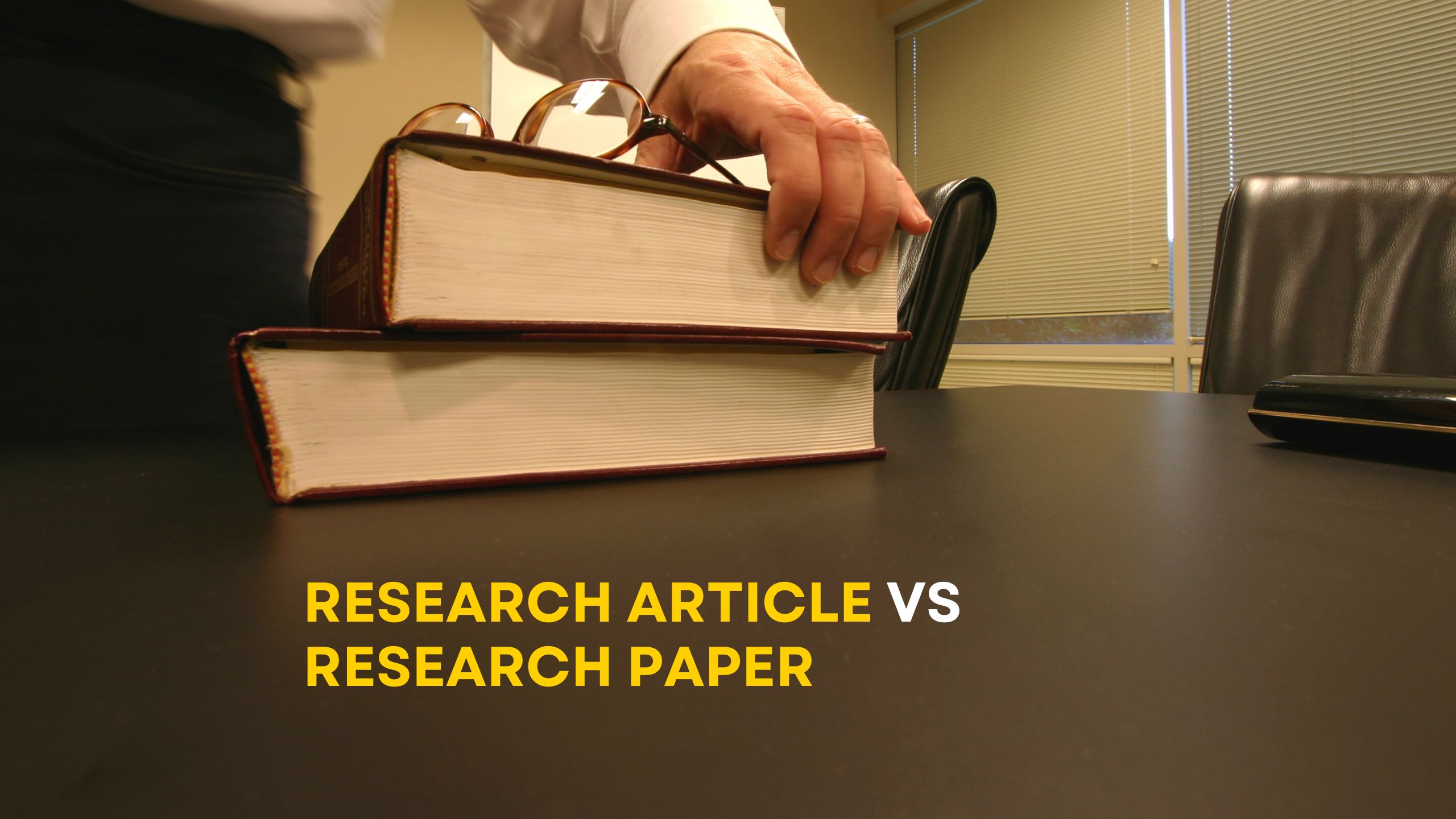In academic, professional, and journalistic circles, both articles and research papers serve distinct purposes. While the casual reader may use the terms interchangeably, the nuances become crucial in educational and scientific communities. Whether you are preparing a submission for a journal, crafting blog content, or engaging in scholarly work, understanding these differences can significantly improve the effectiveness of your writing and communication.

Article
An article is a short piece of writing that typically appears in newspapers, magazines, blogs, journals, or websites. It is intended to inform, persuade, entertain, or analyze a subject briefly. Articles can vary widely in content, tone, and purpose depending on the publication and audience.
Types of Articles:
- News articles
- Feature articles
- Opinion or editorial articles
- Scholarly journal articles (non-research)
- Blog posts
- Review articles
Research Paper
A research paper is a formal, academic document that presents original findings, arguments, or analysis based on extensive and systematic research. Research papers are commonly submitted in universities or published in peer-reviewed academic journals.
Types of Research Papers:
- Analytical research paper
- Argumentative research paper
- Experimental research paper
- Survey-based research paper
- Literature review-based research
Purpose and Intent
Article:
The primary goal of an article is to communicate an idea, opinion, or event to the general public or a specific interest group. It may highlight current issues, provide how-to information, or comment on trends.
Research Paper:
The purpose of a research paper is to present original research, analyze data, and contribute new knowledge to a specific academic field. It seeks to answer a research question or test a hypothesis using scientific methods.
Structure and Formatting
Article Structure:
- Title
- Byline (Author’s Name)
- Introduction
- Body (2–3 sections)
- Conclusion
- Optional: Subheadings or bullet points
Research Paper Structure:
- Title
- Abstract
- Keywords
- Introduction
- Literature Review
- Methodology
- Results
- Discussion
- Conclusion
- References/Bibliography
- Appendices (if needed)
Language and Style
Article:
- Conversational or semi-formal
- May use first-person (I/we)
- Accessible vocabulary
- Short paragraphs
- Rhetorical questions or calls to action
Research Paper:
- Academic and formal tone
- Objective and impersonal
- Technical or discipline-specific terminology
- Structured and analytical language
- Passive voice is common
Depth of Research
Article:
- General overview of a topic
- Based on secondary sources
- Less depth; often focuses on recent developments or trends
Research Paper:
- Deep investigation
- Includes primary and secondary sources
- Involves data collection, surveys, experiments, or statistical analysis
Audience and Accessibility
Article:
- Targeted at a general audience or a specific community
- Easier to understand, even for non-experts
Research Paper:
- Written for scholars, researchers, and professionals
- Requires prior knowledge of the subject area
Use of Citations and References
Article:
- May include references or links
- Less rigorous in citation style
- Typically does not require a bibliography
Research Paper:
- Extensive use of citations
- Formal citation styles: APA, MLA, Chicago, IEEE, etc.
- Mandatory bibliography/reference list
Publication Platforms
Articles:
- Newspapers (e.g., The New York Times)
- Magazines (e.g., Time, National Geographic)
- Online blogs or websites
- Trade journals
Research Papers:
- Academic journals (e.g., Nature, IEEE, Elsevier)
- University repositories
- Conference proceedings
Peer Review Process
The peer review process is a key feature that separates scholarly research papers from general articles. It involves the evaluation of a research paper by experts in the same field to ensure the work meets high academic standards. This process helps maintain credibility, accuracy, and quality in academic publishing.
Article:
- Edited by a content editor or journalist
- Quick publishing process
- Not peer-reviewed in most cases
Research Paper:
- Subject to double-blind or open peer review
- Evaluated by subject matter experts
- May take months to get published
Length and Word Count
Length and word count vary significantly between articles and research papers, reflecting their depth and purpose. Articles are usually concise and to the point, while research papers are more detailed and extensive, often requiring a higher word count to cover complex topics thoroughly.
Article:
- Typically 500 to 2000 words
- Depends on the platform and topic
Research Paper:
- Can range from 3000 to 10,000+ words
- Length varies depending on discipline and complexity
Authorship and Credibility
Who writes a piece—and their qualifications—can greatly affect how trustworthy and authoritative it is. Articles may be written by journalists or content creators, while research papers are typically authored by experts or scholars in a specific field. This difference plays a key role in how each is perceived in terms of credibility and reliability.
Article:
- Written by journalists, bloggers, or guest writers
- May or may not hold credentials in the topic area
Research Paper:
- Authored by researchers, scholars, or academics
- Requires expertise in the subject matter
- Includes author affiliations and disclosures
Timeliness and Relevance
Timeliness and relevance determine how useful and impactful a piece of writing is at a given moment. While articles often focus on current events or trends, research papers aim for long-term significance by exploring deeper, lasting topics.
Article:
- Focuses on current events or trends
- Quickly outdated
Research Paper:
- Focuses on long-term scholarly contribution
- Remains relevant for years or decades
When to Choose an Article vs a Research Paper
| Purpose | Choose an Article | Choose a Research Paper |
|---|---|---|
| Inform general audience | ✅ | ❌ |
| Contribute to academic knowledge | ❌ | ✅ |
| Quickly publish ideas or opinions | ✅ | ❌ |
| Apply for academic promotion or funding | ❌ | ✅ |
| Summarize or analyze trends | ✅ | ❌ |
| Present original findings | ❌ | ✅ |
Summary Chart: Article vs Research Paper
| Feature | Article | Research Paper |
|---|---|---|
| Purpose | Inform, entertain, persuade | Present original research |
| Audience | General public | Academic community |
| Structure | Intro, body, conclusion | Abstract, methods, results, discussion |
| Language | Conversational or semi-formal | Academic and technical |
| Depth | Surface-level to moderate | In-depth and analytical |
| Citations | Optional | Mandatory |
| Peer Review | Rare | Common |
| Word Count | 500–2000 | 3000–10000+ |
| Publication Time | Days to weeks | Weeks to months |
| Examples | Blog posts, news articles | Theses, journal papers |
While both articles and research papers are integral to the world of writing and publishing, they serve different purposes. An article is generally aimed at engaging readers quickly, presenting information in a digestible format. Research paper, on the other hand, is a product of deep inquiry, methodical study, and critical thinking designed to advance knowledge in a specific field.



